Abstract
In Japanese loquat farming, the harvest volume nationwide in 2022 will be a maximum of 2.53kt, the bearing tree area will be a maximum of 905ha, and the shipping volume will be maximum in Nagasaki at 746t. Past trends suggest that loquat cultivation is thriving throughout the country, with Nagasaki being a particular center of cultivation. Since Nagasaki has the largest shipping volume, it is possible that the region has high productivity and distribution capacity, which shows its advantage over other regions. Additionally, the increase in the area of bearing trees may reflect growing demand and improved production efficiency, and this trend may continue in the future. However, factors such as climate change and changes in market demand may lead to fluctuations in production volumes and regional competition. Therefore, sustainable production and regional cooperation are important in loquat agriculture, and a strategy that takes these factors into account is required.
Loquat harvest volume (main data).
Japan’s loquat harvest has fluctuated between 1973 and 2022. The highest harvest was recorded nationwide in 1979, at 17.6kt, but harvests have declined every year since, with the current national harvest standing at just 14.4% of the peak. This trend can be attributed to several factors. This may be due to the progress of agricultural mechanization and urbanization, which has led to a decrease in farmland and the number of farmers. Additionally, changes in consumer eating habits and competition from imports are also thought to be affecting the demand for loquats and the area under cultivation. Additionally, natural disasters such as extreme weather events and disease outbreaks due to climate change may also contribute to yield fluctuations. Taking these factors into consideration, Japanese loquat agriculture needs to take steps towards sustainable production and stabilization of demand, and agricultural policies and technological innovation will be key.
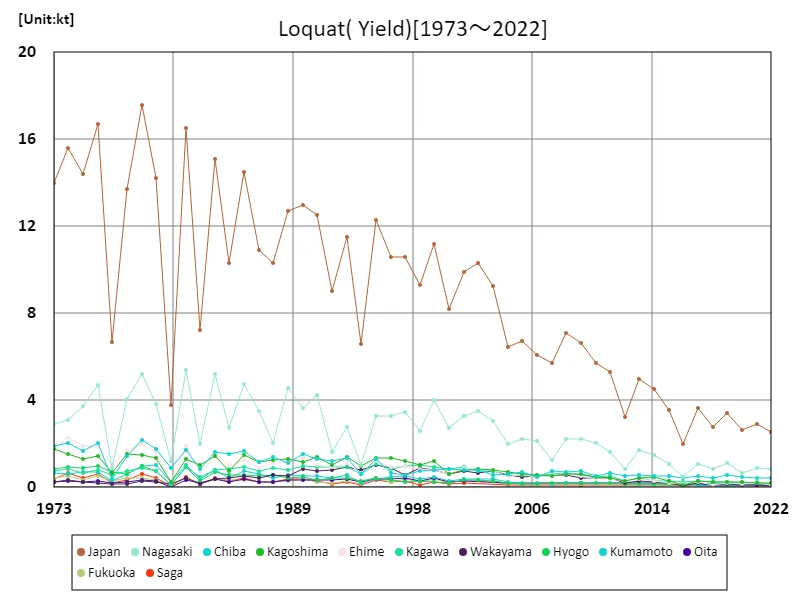

The maximum is 17.6kt[1979] of Japan, and the current value is about 14.4%
Loquat harvest volume (by prefecture).
According to data for 2022, Nagasaki has the highest loquat harvest among all prefectures in Japan, at 853 tons. This figure is the largest overall and represents the highest harvest on record. This trend suggests that Nagasaki is a major loquat producing area. And while other prefectures’ yields may have increased as well, Nagasaki’s is the largest, so it may be more productive than other areas. This increasing trend is thought to be due to improvements in local agricultural techniques and production systems, as well as increased demand. Additionally, it is possible that demand for loquats is increasing among consumers. However, due to differences in regional climatic conditions, soil quality, and the level of farmer technology, yields in each region will tend to vary. Taking these factors into consideration, it is necessary to build a long-term sustainable production system.
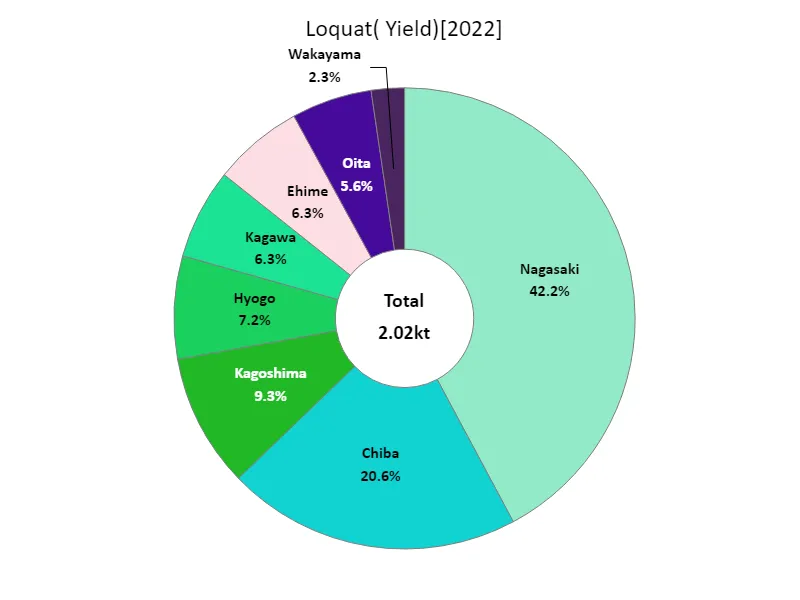

The maximum is 853t of Nagasaki, the average is 253t, and the total is 2.02kt
Loquat fruiting tree area (main data).
The area of bearing loquat trees in Japan has fluctuated between 1973 and 2022. The maximum fruiting tree area recorded nationwide was 2.44kha in 1991, but the fruiting tree area has declined in subsequent years, and the current fruiting tree area nationwide is only 37.1% of the peak. This trend can be attributed to several factors. Due to urbanization and conversion of agricultural land, the area suitable for growing loquats may be decreasing. Another factor is thought to be the rationalization and diversification of agricultural management due to agricultural mechanization and economic changes. Furthermore, because loquat cultivation is time-consuming and labor-intensive, the difficulty of cultivation and changes in demand among farmers may also be contributing to the decline in the area of fruiting trees. Taking these factors into consideration, Japanese loquat agriculture needs to work toward building a sustainable production system and expanding demand, for which agricultural policies and technological innovation will be key.
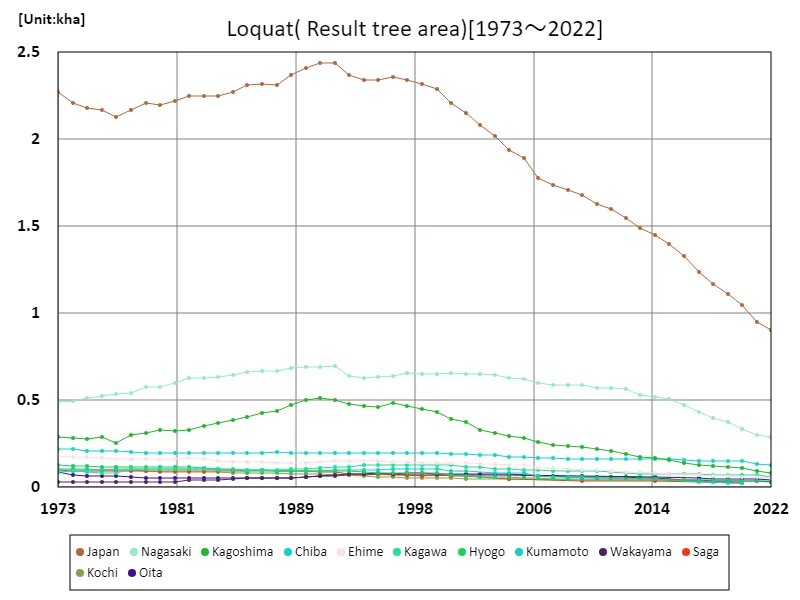

The maximum is 2.44kha[1991] of Japan, and the current value is about 37.1%
Area of loquat bearing trees (by prefecture).
According to data from 2022, Nagasaki has the largest area of bearing loquat trees in Japan by prefecture, at 290 hectares. This figure is the largest overall and represents the highest bearing tree area ever. This trend suggests that Nagasaki is a major loquat producing area. It is also possible that the fruiting tree area in other prefectures has increased similarly, but Nagasaki, being the largest, may have a larger production area than other regions. This increasing trend is thought to be due to improvements in local agricultural techniques and production systems, as well as increased demand. Additionally, it is possible that demand for loquats is increasing among consumers. However, due to differences in regional climatic conditions, soil quality, and the technical level of farmers, the area of fruiting trees in each region will show different trends. Taking these factors into consideration, it is necessary to build a long-term sustainable production system.
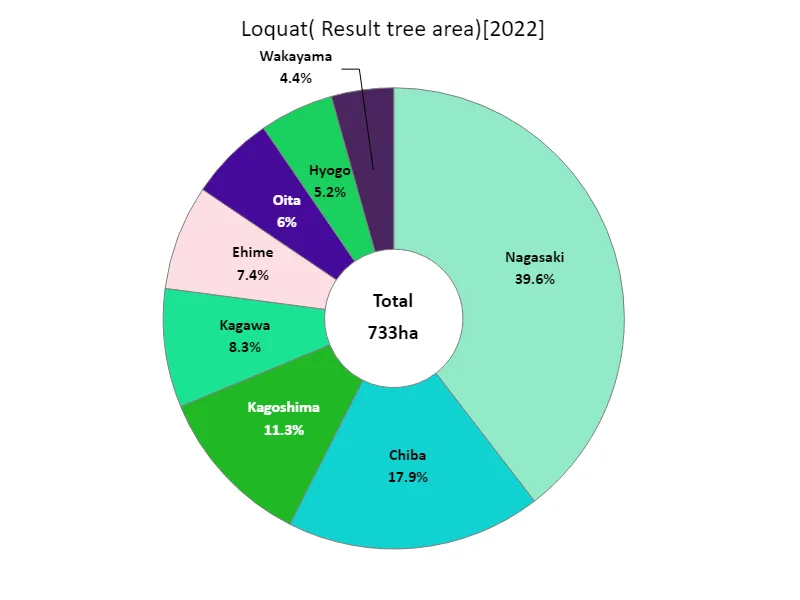

The maximum is 290ha of Nagasaki, the average is 91.6ha, and the total is 733ha
Loquat shipment volume.
For Japan’s loquat shipments in 2022, the largest overall volume will be in Nagasaki at 746t, with an average of 215t and a total of 1.72kt. What is clear from this data is that Nagasaki is the main producer of loquats and has the largest overall shipment volume. In addition, the average shipping volume is 215 tons, which shows that a certain amount of loquats are produced in areas other than Nagasaki. This suggests that loquat cultivation is particularly thriving in some areas. Furthermore, the total shipping volume was 1.72kt, which suggests that loquat production is being carried out at a certain level or above throughout Japan. This trend may be due to an increase in demand for loquats, or farmers and producers may be improving their production systems. However, due to differences in climatic conditions and soil conditions in different regions, as well as regional variations in demand and consumption patterns, shipping volumes in each region will show different trends. Taking these factors into consideration, it is important to build a sustainable production system and promote cultivation that meets demand.
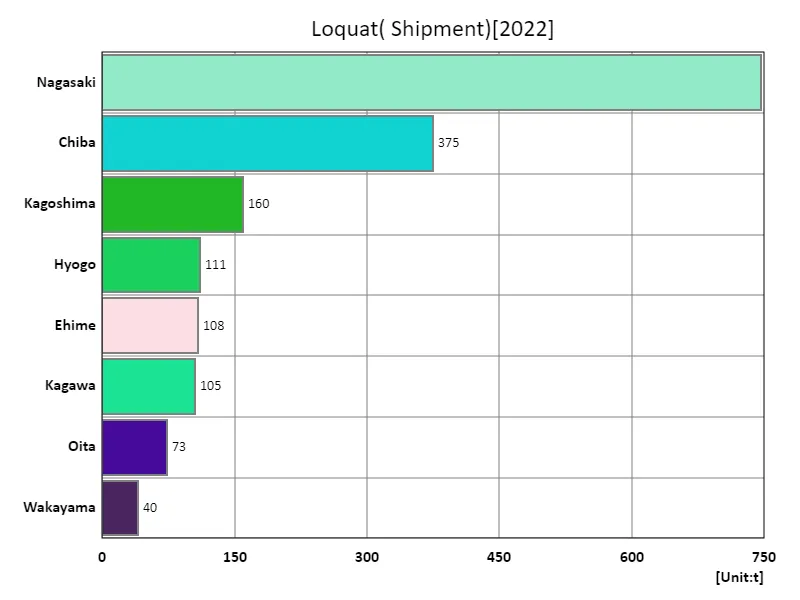

The maximum is 746t of Nagasaki, the average is 215t, and the total is 1.72kt
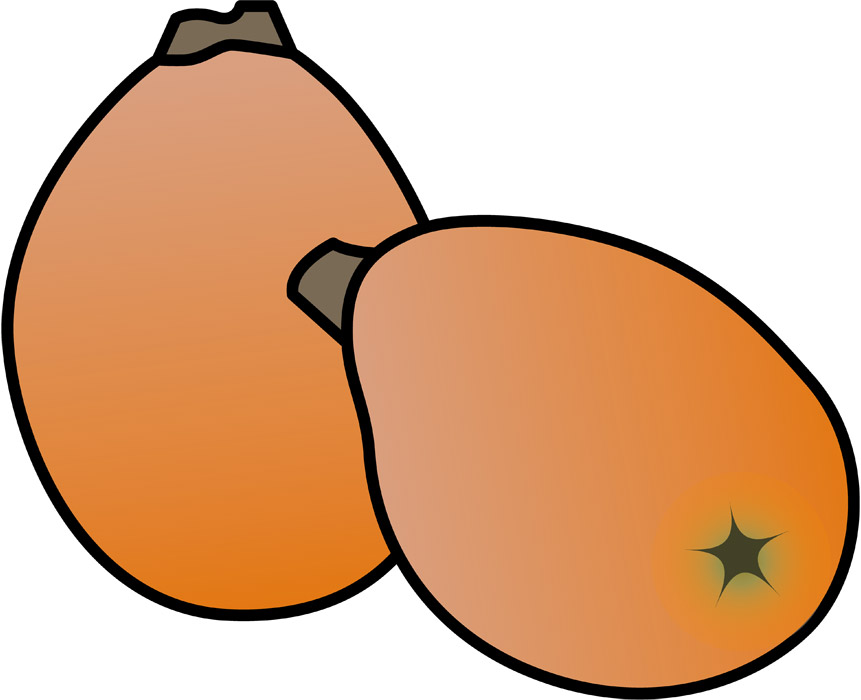


Comments